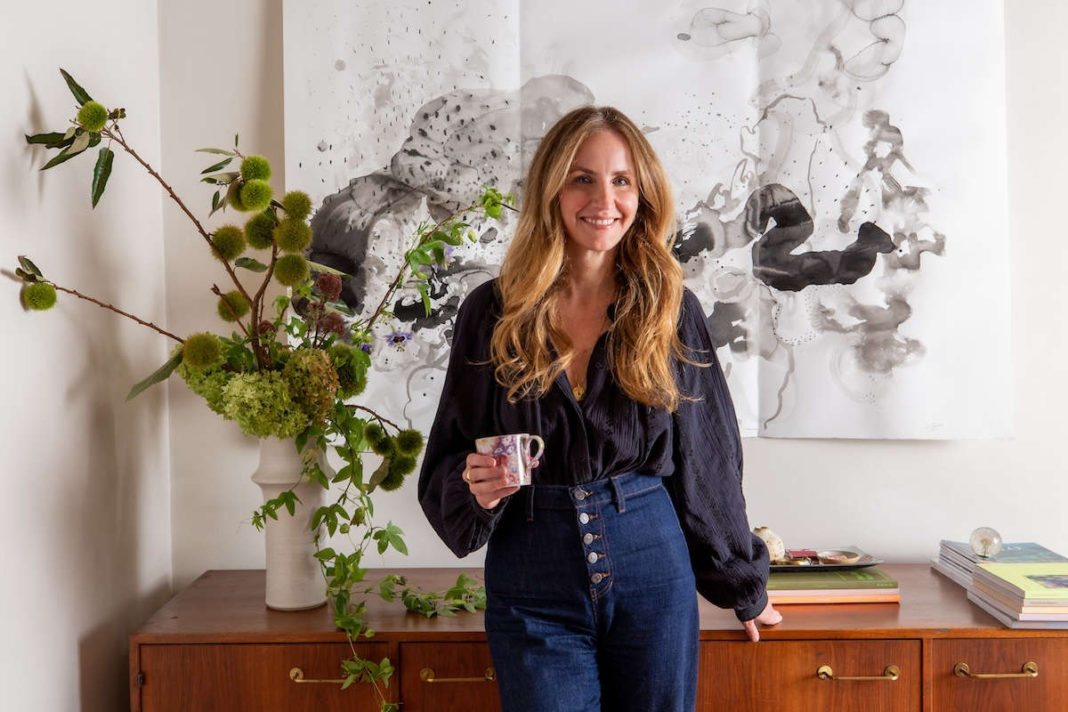Every space designed by Redmond Aldrich Design is a multitasker.
“Even a corner can be given jobs,” says founder and creative director Chloe Redmond Warner. “The first step is making a space useful, and it will become alive. Then, there’s making it as beautiful and pleasant as possible. Finally, there’s the atmosphere: light, air, the sounds of nature, tactile features. If a space does even one of those things, it will feel great.”
Warner says all noteworthy spaces offer one or more of three elements: great architecture, art or interior design. In the best-case scenarios that describe the approach the firm considers foundational, a project possesses all three. Even so, if a space like a warehouse gallery lacks the first element but carries exceptional artwork, it’s successful on one level. Residential or commercial spaces that are architecturally stunning and have exquisite, appropriate interior design, she says are “powerful atmosphere squared,” and “if you have all three—architecture, art and design—the atmosphere’s raised to the third power.”
Elevated atmosphere is recognizable in the firm’s portfolio. A 1908 craftsman home of a young family in Piedmont is made vivid and boisterous with green, blue, rust, red, peach and other tones found in nature. Lively, geometric patterns animate the flooring, walls, furniture and textiles.
NBA star Andre Iguodala’s five-bedroom 7,000-square-foot house follows a more subdued, elegant stone-and-wood palette of white, gray, brown and tan. The over-sized spaces are made personal, warm and compelling with subtle lighting and by vibrant artwork such as an abstract painting by Nigerian American artist Odili Donald Odita in the spacious living room, a bathroom’s frolicking butterflies on deep green wallpaper by Peg Norriss, a slice of brilliant orange and eye-catching diagonal black-and-white stripes painted on the walls of a teenager’s bedroom alcove and more.
Warner grew up in Montana. Her mother is a painter, ceramicist and yoga teacher and knew instinctively how to create a beautiful home. “My mom comes from a family where everybody has aesthetic intelligence,” she says. “They know how to make a room comfortable, appropriate, lovely. What goes into making interesting atmosphere? Some people are born knowing that: My mom was born with it.”
Her father is a wildlife zoologist and a collector skilled in the art of display. “He went through an Audubon print phase, a Japanese glass fishing float phase, antique guns for a while, then things he inherited—he was early on eBay and a big fan of offsite storage,” she says, laughing at the memories, but not the importance of placement, balance, variety, familiarity and visual novelty.
After attending the architecture program at Harvard University’s Graduate School of Design and graduating in 2005, Warner moved to the Bay Area and established her studio. Striking out on her own instead of working in a studio owned by someone else was something she never questioned.
“I was young and had an architecture degree that gave me a false sense of confidence,” Warner says. “I thought, I’ll just hang out my shingle. Even my internships, there was an independent streak.”
An example provides convincing evidence. While interning in an office she admired and respected, Warner was tasked with organizing the art and supply closet. She recalls “taking the job seriously” and purging the office of everyone’s favorite pens and notebooks to replace them with materials she believed were superior.
“Looking back at that now, I would’ve died if an intern did that to me!” says Warner. “I recognize it was the spirit of someone at age 25 who was ready to make her own world.”
In Warner’s world, not only corners, vestibules, alcoves and small rooms in homes, but large spaces such as grand living rooms must support a gamut of services: socializing with guests, reading alone, doing a puzzle or playing floor games with the family, and ultimately, creating memorable moments. Sensory elements play a major role.
“That kind of awareness is everything,” she says. “It’s the primary foundation we build upon, and it’s unfortunate that interior design is communicated in flat pictures when so much of it is lived in the senses, how things sound and feel. Yes, it has to look good, but really, my truest tenet is that it’s all atmosphere.”
It’s fair and accurate to say the studio’s high-profile residential clients and top-tier commercial projects have caught the attention of the industry. Magazine features and profile articles have appeared in The New York Times T Magazine, Architectural Digest, The Wall Street Journal, House Beautiful, Vogue Living, Luxe Magazine, California Home + Design and more.
Awards received include the Luxe Red Award (2019), San Francisco Showcase House (2017) and California Home + Design (2011), among others. This year, Warner was selected to participate in the prestigious internationally recognized Kips Bay Decorator Show House in West Palm Beach, Florida.
The spacious 8,589 square feet of living space on the property offers the highly curated list of 23 winning interior designers ample opportunity to demonstrate their unique styles and share signature philosophies and approaches to the craft.
Speaking as a woman entrepreneur, Warner suggests the field of interior design is rare. “It’s one of the few industries where the people at the top are at least half, if not mostly, women. It has always felt friendly, and there are a lot of role models to look up to,” she says. “Women interior designers are professional, punctual, honest, very funny, wonderful listeners, and care about the comfort of people they’re with. It’s not lonely, and you can see yourself as a woman in this business. For that reason, I haven’t felt friction.”
If gender-related tension does exist, it’s in the synapses between architecture and interior design. According to Warner, architecture is considered more masculine and prestigious. “It doesn’t have to be that way. After being an artist who got into architecture school based on her painting portfolio, getting a degree and working successfully in design, they’re all about contributing and creating things that are beautiful and aesthetic. I’m advocating for all of them to be on equal footing,” Warner notes.
She names British designer Ilse Crawford as someone she admires and would like to work with and recalls receiving valuable advice early in her career from “the iconic” San Francisco designer Martha Angus. Respect for designers such as Americans Albert Hadley and Sister Parish, the UK’s Rose Uniacke and others, and a fondness for designs found in classic properties such as the Villa Kerylos in France, combined with a practical, California contemporary mindset, have most recently catapulted Warner back into painting. The restorative art-making practice has generated energy to launch new fabric, wallpaper and furniture lines.
“I was too busy leading the firm for many years and had stopped painting,” she says. “Making things from scratch again was the impetus. I started painting flora and fauna while in Maine. I use gouache because it has the immediacy of acrylic or watercolor and the pigment and layering of oil paints. With the furniture, nothing makes me more sad than a sofa that doesn’t last. There’s no reason to make fast furniture, which still has environmental cost. The new furniture will be built one at a time by living artists and craftspersons making beautiful things and will definitely not be fast furniture.”
Asked about what she hopes is true one year from now, Warner says, “I’m satisfied and just want things to continue, to be honest. I’m excited to develop the furniture, fabric and wallpaper and see them come alive and who uses them. It will be fun.”
And soon, with magical, atmospheric interior design and the new lines, every space touched by Redmond Aldrich Design will perform and “do its job.”











